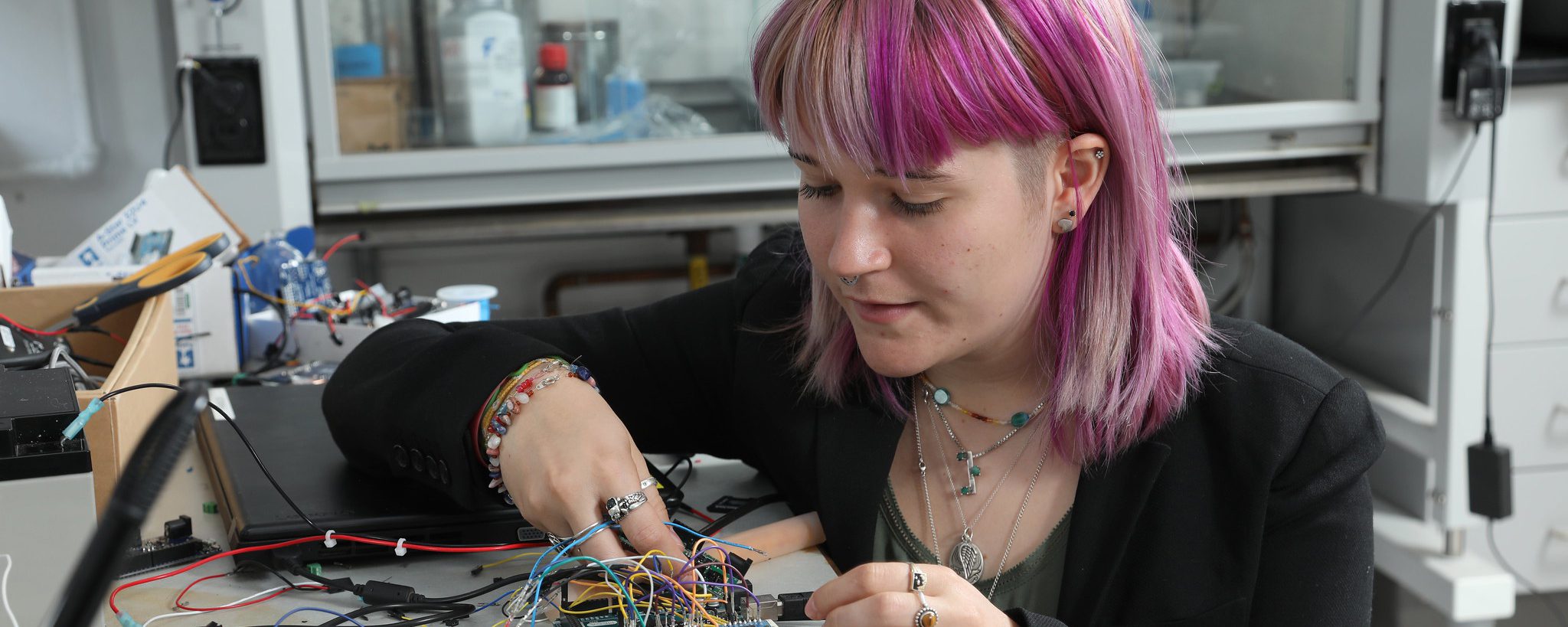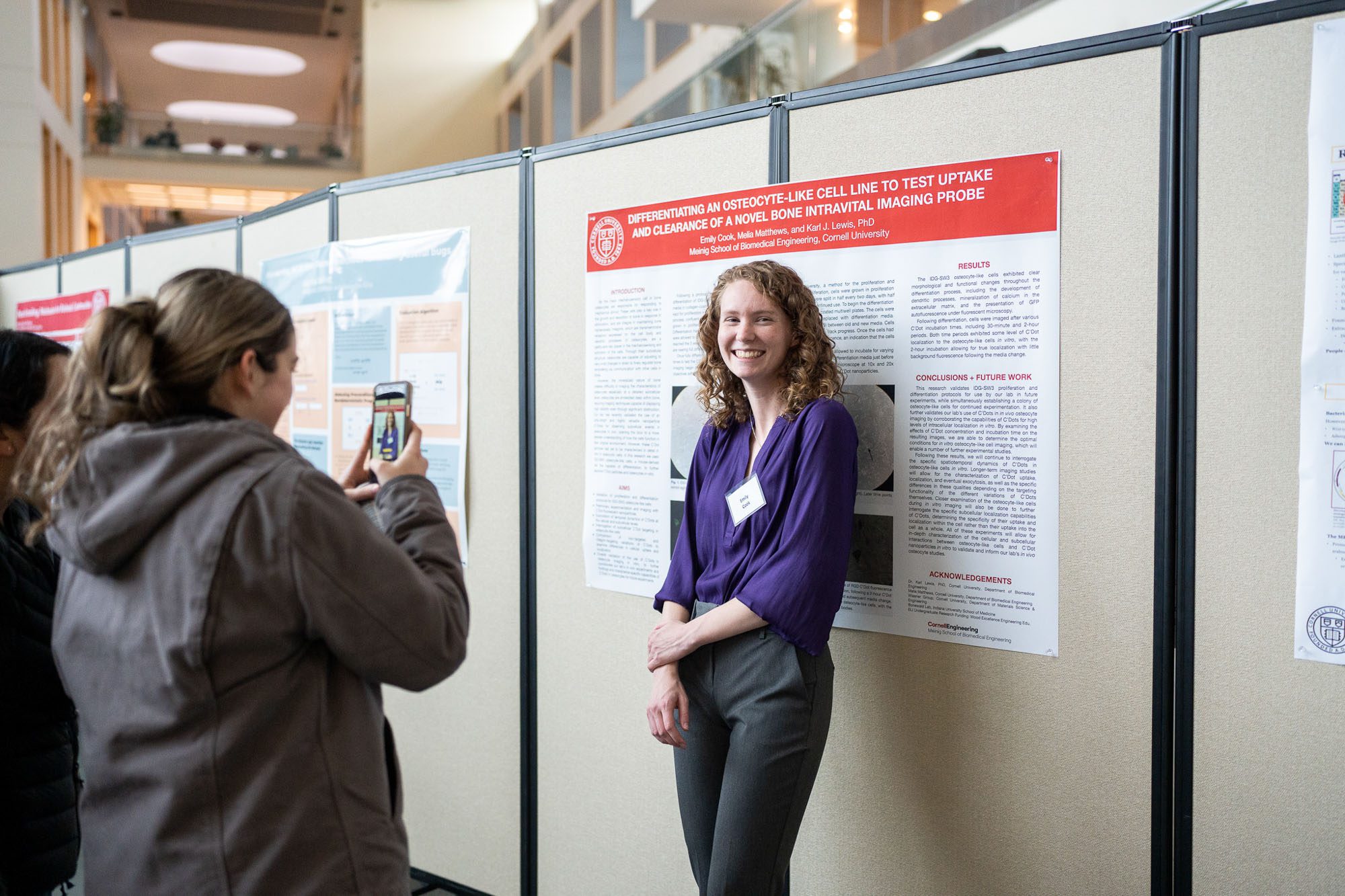As part of your agreement in accepting undergraduate research funding, you must submit a brief final report (a minimum of five double-spaced pages) as well as a separate abstract at the conclusion of the semester in which you receive funding. Specific dates will be provided by the Office of Inclusive Excellence. Your report must be submitted electronically to eng-learning@cornell.edu and may be reviewed by the agency that funded your research.
Be sure to include the following:
- Title page
- Abstract*
- Introduction
- Materials and methods
- Results
- Discussion
- Conclusion
- References
*While the abstract will be included in your final report, it is also requested that you submit a copy of your abstract as a separate document for promotional purposes.
-
Title Page
Provides the name of the experiment; your full name; the names of other lab partners, if applicable; the name and department of your faculty advisor; the date; and the name of the research award funding source.
-
Abstract
Provides a brief summary of the paper and should be written last. In a scientific report, the abstract is generally one paragraph long and addresses these five questions:
- Why is the experiment being conducted?
- What problem is being studied?
- What were the most important steps taken to solve the problem?
- What were the most important results that were obtained?
- What might be the implications of these results?
-
Introduction
Presents the background information, statement of the objective and results, providing readers with a clear picture of the experiment. The introduction also provides the reader with an overview of the information, organized sequentially, as it is discussed in the remainder of the report.
- Background information emphasizes the recent developments that have been made which make this research necessary or important.
- Objective statement gives the hypothesis and purpose for the research, clearly communicates the subject of the report, and familiarizes readers with the experiment.
- Summary provides a brief outline of the report and identifies the independent and dependent variables involved.
- Results reveal to readers what to expect later on in the report.
-
Materials and Methods
This is constructed from complete lab notes that feature data, observations, calculations and any necessary tables, graphs, or illustrations. In the first draft of a report, the materials and methods section is usually written first as it is the section on which the rest of the paper is based.
-
Results
Presents a clear summary of data to the reader in a logical order. The results section will include all pertinent experimental data that was gathered during the procedure and that was used to draw conclusions relating to the research. The results section will not attempt to describe the methods or interpret the data.
- Explanation of results highlights important findings that led to your conclusion, but does not discuss the conclusion at this point. All information is explained in clear paragraph form first.
- Figures, graphs or tables display the results in a way that is easy for the reader to comprehend and internalize. These visuals are generally used to summarize data.
-
Discussion
Section reports, interprets, analyzes, and discusses the significance of the experiment and results. This section is usually written after the results section and is often considered the most important part of the paper.
- Review explains the expected findings and why these types of results were anticipated.
- Comparison measures and relates your actual results and conclusions against the expected findings.
- Support states whether your results backed your hypothesis and the degree to which they supported or did not support it. This section addresses the question of why your hypothesis was or was not supported.
- Conclusions expresses what conclusions can be drawn from the findings and results of the experiment.
- Constructive criticism addresses areas of concern in the experiment in a positive manner and offers suggestions for future research.
-
Conclusion
Briefly summarizes the results and conclusions of the procedure and mentions some of your personal conceptions about the contribution of the research to the field and future study in the discipline.
- Summary explains the outline of the report and its final conclusions.
- Outlook wraps up the report by addressing the question of where future research should begin and what researchers should explore. Tie this information in with your experiment and findings.
-
References
Gives credit to sources that were used when assembling the report and provides enough information for anyone reading the report to go back and locate these sources. Consult your faculty mentor about the appropriate format for the references section.
-
Separate Abstract Document
- Format: Submit as separate Word document, one page, single-spaced, 11-point font.
- Content: At the top of the page, include all information from the title page and abstract.
Report Checklist
- Choose a clear and appropriate title
- State and answer the main question presented by the research
- Describe the research process in enough detail to be replicated
- Document all aspects of the process that might have influenced results
- List all procedures specifically
- Record all measurements with proper units
- Show any required calculations
- Summarize gathered data effectively
- Organize data into tables, graphs and illustrations when necessary
- Assign titles to all tables, graphs and illustrations
- Number equations, tables, graphs and illustrations separately and consecutively
- Cite all references in uniform documentation style
- Submit abstract with title page information as a separate Word document
Additional Resources
-
Scientific Poster Design
Creating a scientific poster? This guide provides all the details you need to condense months or even years of research into a compelling short story that captivates your audience.
-
![Emily Cook at the undergraduate research poster session]()

